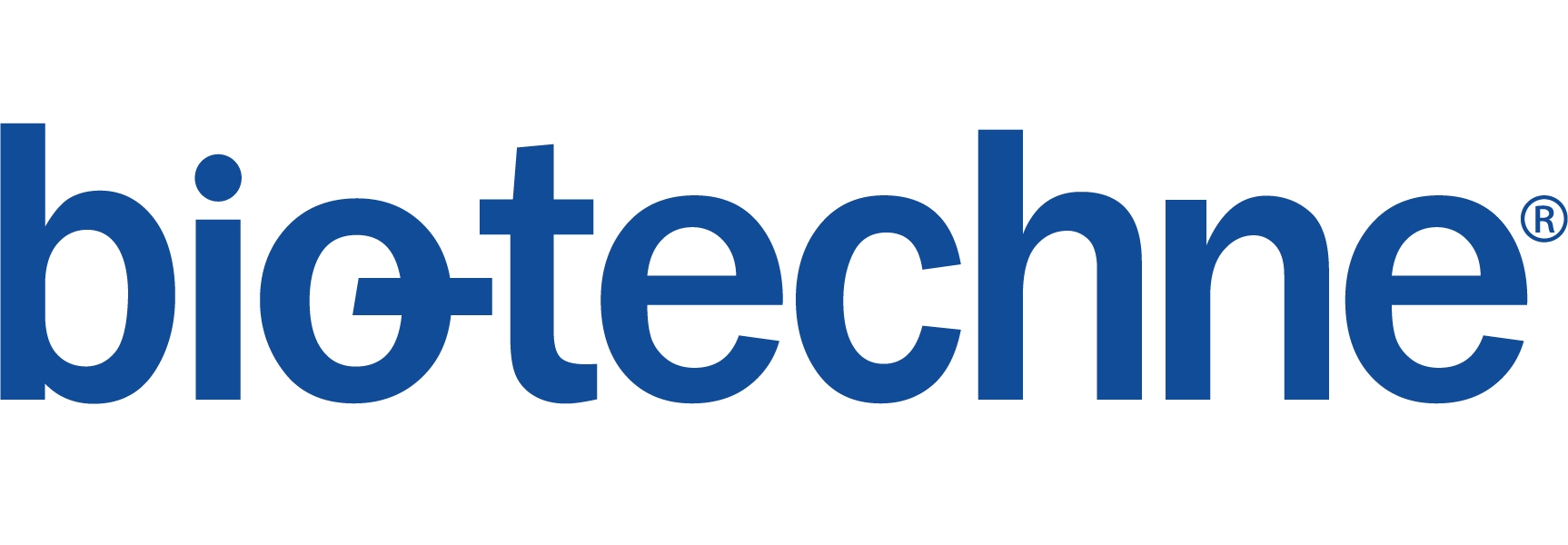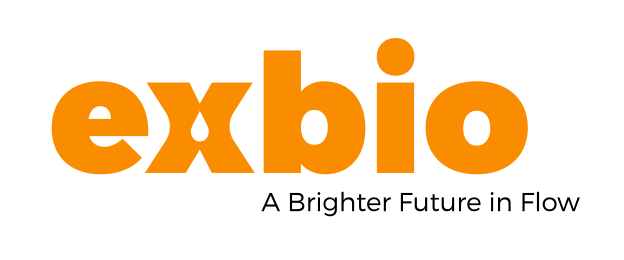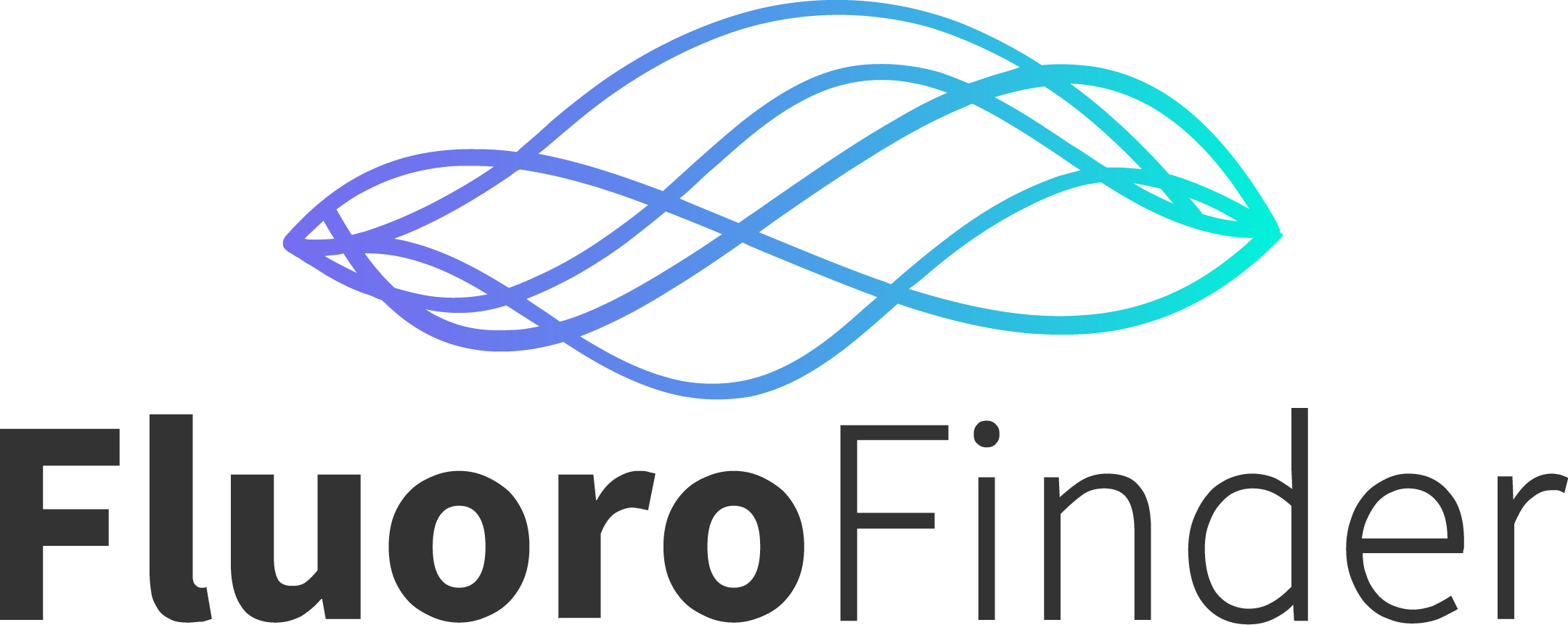-
GENE_NAME : CD5
CD_NAME : CD5
DESC: CD5 molecule
OTH_NAMES: T1CLONE_NAME ISO_TYPE SUBMITTER AVAILABLE_FROM CD5-5D7 IgG1 Knapp AbD Serotec MF7-14-5 IgG2a Dalchau AbD Serotec UCHT2 IgG1k Beverley BD Biosciences CRIS-1 IgG2a Tinsley Novus Biologicals H65 IgG1 Tinsley Novus Biologicals MF7-14-5 IgG2a Tinsley Novus Biologicals UCHT2 IgG1k Tinsley Novus Biologicals Y-2/178 IgG1 Tinsley Novus Biologicals UCHT2 IgG1k Beverley BioLegend UCHT2 IgG1k Beverley AbD Serotec UCHT2 IgG1k Beverley Thermo Fisher Scientific CRIS1 Mouse IgG2a EXBIO Praha MEM-32 Mouse IgG1 Horejsi EXBIO Praha -
CLONE_NAME ISO_TYPE SUBMITTER AVAILABLE_FROM 38022 IgG2a Naito 7.8 IgG2a Aversa 10.2 IgG2a Martin PJ 145-GF3 IgG Carriere A50 IgG2a Boumsell AMG4 IgG2b Gordon BL1a IgG2a Brochier BL1b IgG1 Brochier BL-6F4 IgG3 Fiebig C1.1E4.7 IgG1 Mawas C156 IgG2b Krammer CB01 IgG2a Malavasi CD5-5D7 IgG1 Knapp AbD Serotec CLB-T1/1 unknown Tetteroo CRIS-1 IgG2a Vilella DK23 IgG1 Just F93-6D9 (S-T1) unknown Poncelet F101-15 IgG2a Carriere F111-98 IgG1 Carriere H65 IgG1 Bai Yan H154 unknown Yan Bai HH9 IgG2b Naoe T HI211 IgG1 Shen HISM2 IgG1 Shen I247 IgG2b Bernard ICO-80 IgG1 Baryshnikov JML-H4 IgG3 Yokoyama JML-H5 IgG1 Yokoyama KS-6 IgG1 Sagawa Leu-1 IgG2ak Warner LIII IgG2a Buck LO-CD5a IgG2a Ravoet LO-Tact5 IgM Ravoet LT1 IgG1 Filatov M-T61 IgG2b Rieber M-T503 IgG1 Rieber M-T504 IgG2b Rieber M-T505 IgG1 Rieber MEM-32 IgG1 Horejsi MEM-128 IgM Horejsi MF7-14-5 IgG2a Dalchau AbD Serotec NU-TPAN IgG2a Yokoyama SC1 IgG2a Fox RI SM2 IgG1 Chen SMU1 unknown Gong SMU3 unknown Gong STB 1C1 IgG Hadam T1 IgG2a Reinherz T1 /24T6G12 IgG2a Reinherz T1b unknown Yan Bai T1c unknown Yan Bai T1LP IgG2a Martone T101 IgG2a Royston I TLP IgG2a Mortone TM4-1 IgG1 Ando Tü71 unknown Wernet UCHT2 IgG1k Beverley BD Biosciences WC11.5 unknown Cassano WuT3-1 IgG2a Bin WuT3-3 IgG1 Bin XXII49 IgG2a Genetet Y-2/178 unknown Mason YTH26.5 IgG2b Waldmann H CRIS-1 IgG2a Tinsley Novus Biologicals H65 IgG1 Tinsley Novus Biologicals MF7-14-5 IgG2a Tinsley Novus Biologicals UCHT2 IgG1k Tinsley Novus Biologicals Y-2/178 IgG1 Tinsley Novus Biologicals 8B10d IgM Yélamos UCHT2 IgG1k Beverley BioLegend UCHT2 IgG1k Beverley AbD Serotec UCHT2 IgG1k Beverley Thermo Fisher Scientific CRIS1 Mouse IgG2a EXBIO Praha MEM-32 Mouse IgG1 Horejsi EXBIO Praha -
STRUCTURE
CD5 is a type 1 transmembrane glycoprotein of the scavenger receptor cysteine-rich family. Its extracellular region contains 3 scavenger receptor cysteine-rich domains in tandem.1 The cytoplasmic tail displays a pseudo-ITIM domain, proximal to the membrane, and a pseudo-ITAM domain, distal to the membrane, involved in signaling.2-3 CD5 is also present as a soluble form.4
- Raman C. CD5, an important regulator of lymphocyte selection and immune tolerance. Immunol Res. 2002;26:255-63.
- Vilà JM, Calvo J, Places L, Padilla O, Arman M, Gimferrer I, Aussel C, Vives J, Lozano F. Role of two conserved cytoplasmic threonine residues (T410 and T412) in CD5 signaling. J Immunol. 200;166:396-402.
- Perez-Villar JJ, Whitney GS, Bowen MA, Hewgill DH, Aruffo AA, Kanner SB. CD5 negatively regulates the T-cell antigen receptor signal transduction pathway: involvement of SH2-containing phosphotyrosine phosphatase SHP-1. Mol Cell Biol. 1999;19:2903-12.
- Calvo J, Places L, Espinosa G, Padilla O, Vilà JM, Villamor N, Ingelmo M, Gallart T, Vives J, Font J, Lozano F. Identification of a natural soluble form of human CD5. Tissue Antigens. 1999;54:128-37.
-
LIGANDS
Extracellular
Presumably, CD721, IgVH2, CD53, gp40-804, zymosan5, β-D-glucans5 and gp150.6 It also interacts with CD6 in cis.7
Intracellular associate molecules
Lck8, TCR/CD3 complex9-10, fyn9, PI3K11, c-cbl11-12, ras GAP12, SHP-113, CKII14, AP215, CAMK II16 and BCR complex.17
- Van de Velde H, von Hoegen I, Luo W, Parnes JR, Thielemans K. The B-cell surface protein CD72/Lyb-2 is the ligand for CD5. Nature. 1991;351:662-5.
- Pospisil R, Silverman GJ, Marti GE, Aruffo A, Bowen MA, Mage RG. CD5 is A potential selecting ligand for B-cell surface immunoglobulin: a possible role in maintenance and selective expansion of normal and malignant B cells. Leuk Lymphoma. 2000;36:353-65.
- Brown MH, Lacey E. A ligand for CD5 is CD5. J Immunol. 2010;185:6068-74.
- Bikah G, Lynd FM, Aruffo AA, Ledbetter JA, Bondada S. A role for CD5 incognate interactions between T cells and B cells, and identification of a novel ligand for CD5. Int Immunol. 1998;10:1185-96.
- Vera J, Fenutría R, Cañadas O, Figueras M, Mota R, Sarrias MR, Williams DL, Casals C, Yelamos J, Lozano F. The CD5 ectodomain interacts with conserved fungal cell wall components and protects from zymosan-induced septic shock-like syndrome. Proc Natl Acad Sci U S A. 2009;106:1506-11.
- Calvo J, Places L, Padilla O, Vilà JM, Vives J, Bowen MA, Lozano F. Interaction of recombinant and natural soluble CD5 forms with an alternative cell surface ligand. Eur J Immunol. 1999;29:2119-29.
- Gimferrer I, Farnós M, Calvo M, Mittelbrunn M, Enrich C, Sánchez-Madrid F, Vives J, Lozano F. The accessory molecules CD5 and CD6 associate on the membrane of lymphoid T cells. J Biol Chem. 2003;278:8564-71.
- Raab M, Yamamoto M, Rudd CE. The T-cell antigen CD5 acts as a receptor and substrate for the protein-tyrosine kinase p56lck. Mol Cell Biol. 1994;14:2862-70.
- Burgess KE, Yamamoto M, Prasad KV, Rudd CE. CD5 acts as a tyrosine kinase substrate within a receptor complex comprising T-cell receptor zeta chain/CD3 and protein-tyrosine kinases p56lck and p59fyn. Proc Natl Acad Sci U S A. 1992;89:9311-5.
- Osman N, Ley SC, Crumpton MJ. Evidence for an association between the T cell receptor/CD3 antigen complex and the CD5 antigen in human T lymphocytes. Eur J Immunol. 1992;22:2995-3000.
- Dennehy KM, Broszeit R, Garnett D, Durrheim GA, Spruyt LL, Beyers AD. Thymocyte activation induces the association of phosphatidylinositol 3-kinase and pp120 with CD5. Eur J Immunol. 1997;27:679-86.
- Dennehy KM, Broszeit R, Ferris WF, Beyers AD. Thymocyte activation induces the association of the proto-oncoprotein c-cbl and ras GTPase-activating protein with CD5. Eur J Immunol. 1998;28:1617-25.
- Perez-Villar JJ, Whitney GS, Bowen MA, Hewgill DH, Aruffo AA, Kanner SB. CD5 negatively regulates the T-cell antigen receptor signal transduction pathway: involvement of SH2-containing phosphotyrosine phosphatase SHP-1. Mol Cell Biol. 1999;19:2903-12.
- Calvo J, Vildà JM, Places L, Simarro M, Padilla O, Andreu D, Campbell KS, Aussel C, Lozano F. Human CD5 signaling and constitutive phosphorylation of C-terminal serine residues by casein kinase II. J Immunol. 1998;161:6022-9.
- Lu X, Axtell RC, Collawn JF, Gibson A, Justement LB, Raman C. AP2 adaptor complex-dependent internalization of CD5: differential regulation in T and B cells. J Immunol. 2002;168:5612-20.
- Bauch A, Campbell KS, Reth M. Interaction of the CD5 cytoplasmic domain with the Ca2+/calmodulin-dependent kinase IIdelta. Eur J Immunol;28:2167-77.
- Lankester AC, van Schijndel GM, Cordell JL, van Noesel CJ, van Lier RA. CD5 is associated with the human B cell antigen receptor complex. Eur J Immunol. 1994;24:812-6.
-
GENE_NAME : CD5
CD_NAME : CD5
CD5 is expressed on mature T lymphocytes.1 It is also present on thymocytes and its levels are proportional to the stage of differentiation.2 B-1a cells and B regulatory cells also display CD5.3-5 It can also be induced on B-2 cells of mice.5 Apart from that, CD5 expression has been reported in certain types of dendritic cells.6
- Ledbetter JA, Rouse RV, Micklem HS, Herzenberg LA. T cell subsets defined by expression of Lyt-1,2,3 and Thy-1 antigens. Two-parameter immunofluorescence and cytotoxicity analysis with monoclonal antibodies modifies current views. J Exp Med. 1980;152:280-95.
- Azzam HS, Grinberg A, Lui K, Shen H, Shores EW, Love PE. CD5 expression is developmentally regulated by T cell receptor (TCR) signals and TCR avidity. J Exp Med. 1998;188:2301-11.
- Youinou P, Jamin C, Lydyard PM. CD5 expression in human B-cell populations.Immunol Today. 1999 ;20:312-6.
- Matsushita T, Yanaba K, Bouaziz JD, Fujimoto M, Tedder TF. Regulatory B cells inhibit EAE initiation in mice while other B cells promote disease progression. J Clin Invest. 2008;118:3420-30.
- Cong YZ, Rabin E, Wortis HH. Treatment of murine CD5- B cells with anti-Ig, but not LPS, induces surface CD5: two B-cell activation pathways. Int Immunol. 1991;3:467-76.
- Wood GS, Freudenthal PS. CD5 monoclonal antibodies react with human peripheral blood dendritic cells. Am J Pathol. 1992;141:789-95.
-
GENE_NAME : CD5
CD_NAME : CD5
The receptor CD5 can act as an inhibitory or stimulatory molecule depending on the cell type and stage of maturation.1 For instance, CD5 inhibits Ig-mediated signaling in B-1 cells.2 Similarly, CD5 participates in thymocytes development and selection through negative regulation of the TCR-mediated signaling.3-4 However, in mature T cells, CD5 enhances T cell receptor signaling transduction.5 Furthermore, it participates in Th17 and Th2 differentiation and promotes survival of B cells and T cells.6-8
CD5 is also involved in the maintenance of the immunological tolerance. It regulates T cell responsiveness and anergy.6 CD5 governs extrathymic Treg cells and nTreg development.9-10 In addition, CD5 signaling inhibits autoimmune responses through negative regulation of Ig receptor signaling in anergic B cells.11
Last, CD5 acts as a receptor for PAMPs.12
- Lozano F, Simarro M, Calvo J, Vilà JM, Padilla O, Bowen MA, Campbell KS. CD5 signal transduction: positive or negative modulation of antigen receptor signaling. Crit Rev Immunol. 2000;20:347-58.
- Bikah G, Carey J, Ciallella JR, Tarakhovsky A, Bondada S. CD5-mediated negative regulation of antigen receptor-induced growth signals in B-1 B cells. Science. 1996;274:1906-9.
- Tarakhovsky A, Kanner SB, Hombach J, Ledbetter JA, Müller W, Killeen N, Rajewsky K. A role for CD5 in TCR-mediated signal transduction and thymocyte selection. Science. 1995;269:535-7.
- Mier-Aguilar CA, Cashman KS, Raman C, Soldevila G. CD5-CK2 Signaling Modulates Erk Activation and Thymocyte Survival. PLoS One. 2016;11:e0168155.
- Imboden JB, June CH, McCutcheon MA, Ledbetter JA. Stimulation of CD5 enhances signal transduction by the T cell antigen receptor. J Clin Invest. 1990;85:130-4.
- Sestero CM, McGuire DJ, De Sarno P, Brantley EC, Soldevila G, Axtell RC, Raman C. CD5-dependent CK2 activation pathway regulates threshold for T cell anergy. J Immunol. 2012;189:2918-30.
- Axtell RC, Webb MS, Barnum SR, Raman C. Cutting edge: critical role for CD5 in experimental autoimmune encephalomyelitis: inhibition of engagement reverses disease in mice. J Immunol. 2004;173:2928-32.
- Gary-Gouy H, Harriague J, Bismuth G, Platzer C, Schmitt C, Dalloul AH. Human CD5 promotes B-cell survival through stimulation of autocrine IL-10 production. Blood. 2002;100:4537-43.
- Henderson JG, Opejin A, Jones A, Gross C, Hawiger D. CD5 instructs extrathymic regulatory T cell development in response to self and tolerizing antigens. Immunity. 2015;42:471-83.
- Ordonez-Rueda D, Lozano F, Sarukhan A, Raman C, Garcia-Zepeda EA, Soldevila G. Increased numbers of thymic and peripheral CD4(+) CD25(+)Foxp3(+) cells in the absence of CD5 signaling. Eur J Immunol. 2009;39:2233–2247.
- Hippen KL, Tze LE, Behrens TW. CD5 maintains tolerance in anergic B cells. J Exp Med. 2000;191:883-90.
- Vera J, Fenutria R, Canadas O, Figueras M, Mota R, Sarrias MR, Williams DL, Casals C, Yelamos J, Lozano F. The CD5 ectodomain interacts with conserved fungal cell wall components and protects from zymosan-induced septic shock-like syndrome. Proc Natl Acad Sci U S A. 2009;106:1506–1511.
-
GENE_NAME : CD5
CD_NAME : CD5
Cell marker
CD5 is a pan-T-cell marker but also a marker of B-1a B cells.1-2
CD5 immunophenotyping is used for the diagnosis of chronic lymphocytic leukemia, mantle cell lymphoma, T-cell precursor acute lymphoblastic leukemia/lymphoma, T-cell chronic lymphoproliferative diseases and NK-cell chronic lymphoproliferative diseases.3-5 In diffuse large B-cell lymphoma, CD5 expression is associated with a poorer prognosis.6
- Ledbetter JA, Rouse RV, Micklem HS, Herzenberg LA. T cell subsets defined by expression of Lyt-1,2,3 and Thy-1 antigens. Two-parameter immunofluorescence and cytotoxicity analysis with monoclonal antibodies modifies current views. J Exp Med. 1980;152:280-95.
- Youinou P, Jamin C, Lydyard PM. CD5 expression in human B-cell populations. Immunol Today. 1999 ;20:312-6.
- Dutch/Belgium HOVON CLL working group. Dutch guidelines for the diagnosis and treatment of chronic lymphocytic leukaemia. Neth J Med. 2016;74:68-74.
- Vose JM. Mantle cell lymphoma: 2015 update on diagnosis, risk-stratification, and clinical management. Am J Hematol. 2015;90:739-45.
- van Dongen JJ, Lhermitte L, Böttcher S, Almeida J, van der Velden VH, Flores-Montero J, Rawstron A, Asnafi V, Lécrevisse Q, Lucio P, Mejstrikova E, Szczepański T, Kalina T, de Tute R, Brüggemann M, Sedek L, Cullen M, Langerak AW, Mendonça A, Macintyre E, Martin-Ayuso M, Hrusak O, Vidriales MB, Orfao A; EuroFlow Consortium (EU-FP6, LSHB-CT-2006-018708). EuroFlow antibody panels for standardized n-dimensional flow cytometric immunophenotyping of normal, reactive and malignant leukocytes. Leukemia. 2012;26:1908-75.
- Thakral B, Medeiros LJ, Desai P, Lin P, Yin CC, Tang G, Khoury JD, Hu S, Xu J, Loghavi S, Hu B, Oki Y, Li S. Prognostic impact of CD5 expression in diffuse large B-cell lymphoma in patients treated with rituximab-EPOCH. Eur J Haematol. 2017;98:415-421.
Therapeutic
In the context of cancer, phase 1 studies have been performed with T101 antibodies against CD5 for treatment of chronic lymphocytic leukemia and cutaneous T-cell lymphoma.1-2 Furthermore, injection of soluble CD5 delayed tumor progression in a preclinical model of melanoma.3
In rheumatoid arthritis, administration of anti-CD5 antibodies led to a response rate of 22-25% at 6 months in phase II studies.4 In a mice model of type I diabetes, anti-CD5 therapy protected against diabetes onset.5 Consistent with this, anti-CD5 therapy displayed a dose-dependent effect in preserving β-cell function in a preliminary study of type I diabetes.6 Targeting CD5 have also been studied in other autoimmune diseases including multiple sclerosis, autoimmune nephropathy, systemic lupus erythematosus and inflammatory bowel disease.7
In addition, the administration of T101 antibodies have been assessed in human pilot studies of graft-versus-host disease.8-9
- Dillman RO, Shawler DL, Dillman JB, Royston I. Therapy of chronic lymphocytic leukemia and cutaneous T-cell lymphoma with T101 monoclonal antibody. J Clin Oncol. 1984;2:881-91.
- Foss FM, Raubitscheck A, Mulshine JL, Fleisher TA, Reynolds JC, Paik CH, Neumann RD, Boland C, Perentesis P, Brown MR, Frincke JM, Lollo CP, Larson SM, Carrasquillo JA. Phase I study of the pharmacokinetics of a radioimmunoconjugate, 90Y-T101, in patients with CD5-expressing leukemia and lymphoma. Clin Cancer Res. 1998;4:2691-700.
- Fenutría R, Martinez VG, Simões I, Postigo J, Gil V, Martínez-Florensa M, Sintes J, Naves R, Cashman KS, Alberola-Ila J, Ramos-Casals M, Soldevila G, Raman C, Merino J, Merino R, Engel P, Lozano F. Transgenic expression of soluble human CD5 enhances experimentally-induced autoimmune and anti-tumoral immune responses. PLoS One. 2014;9:e84895.
- Strand V, Lipsky PE, Cannon GW, Calabrese LH, Wiesenhutter C, Cohen SB, Olsen NJ, Lee ML, Lorenz TJ, Nelson B. Effects of administration of an anti-CD5 plus immunoconjugate in rheumatoid arthritis. Results of two phase II studies. The CD5 Plus Rheumatoid Arthritis Investigators Group. Arthritis Rheum. 1993;36:620-30.
- Vallera DA, Carroll SF, Brief S, Blazar BR. Anti-CD3 immunotoxin prevents low-dose STZ/interferon-induced autoimmune diabetes in mouse. Diabetes. 1992;41:457-64.
- Skyler JS, Lorenz TJ, Schwartz S, Eisenbarth GS, Einhorn D, Palmer JP, Marks JB, Greenbaum C, Saria EA, Byers V. Effects of an anti-CD5 immunoconjugate (CD5-plus) in recent onset type I diabetes mellitus: a preliminary investigation. The CD5 Diabetes Project Team. J Diabetes Complications. 1993;7:224-32.
- Consuegra-Fernández M, Aranda F, Simões I, Orta M, Sarukhan A, Lozano F. CD5 as a Target for Immune-Based Therapies. Crit Rev Immunol. 2015;35:85-115.
- Siena S, Villa S, Bonadonna G, Bregni M, Gianni AM. Specific ex-vivo depletion of human bone marrow T lymphocytes by an anti-pan-T cell (CD5) ricin A-chain immunotoxin. Transplantation. 1987;43:421-6.
- Uckun FM, Azemove SM, Myers DE, Vallera DA. Anti-CD2 (T, p50) intact ricin immunotoxins for GVHD-prophylaxis in allogeneic bone marrow transplantation. Leuk Res. 1986;10:145-53.
-
GENE_NAME : CD5
CD_NAME : CD5
GENERAL_INFORMATION
NCBI_NAME CD5 NCBI_OTHER_NAME T1 SWISS_NAMES CD5_HUMAN DESC CD5 molecule LOCUS_INFO_LINKS
HGNC_LOCUS_TAG: 1685 ONLINE_MENDELIAN_INHERITANCE: 153340 NCBI_HOMOLOGENE: 7260 NCBI_MAP: 11q13 NCBI_ENTRE_GENE_ENTRY: 921 GENE_SIZE: 25394 EN_GE_EN: MRNA_SEQ_LENGTH: 3151 PRCORENC: 67 to 1554 ENTREN: ENST00000347785 PROTEIN_LENGTH_NCBI_REFSEQ: 495 NCBI_REF_SEF_ENTRY: NP_055022.2 , 166197668 PROTEIN_LENGTH_SWISPROT: 471 ENSEMBLE_PROT_ENTRY: ENSP00000342681 PR_MO_WEIGHT: 54578 SWPROT_PROTEIN_ENTRY: CD5_HUMAN , P06127 PR_SW_PR: 8.69 IPI_NUMBER: IPI00025383 NCBI_CONSV_DOMAINS: 166197668 ENSM_NUMBER: P06127







